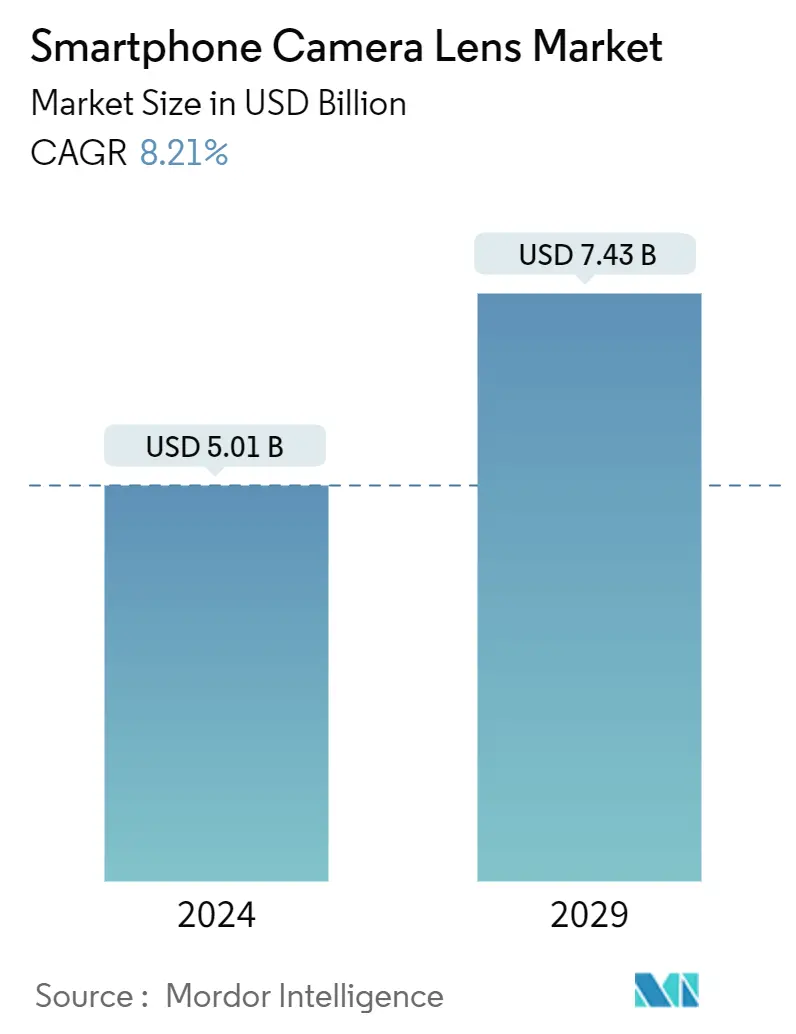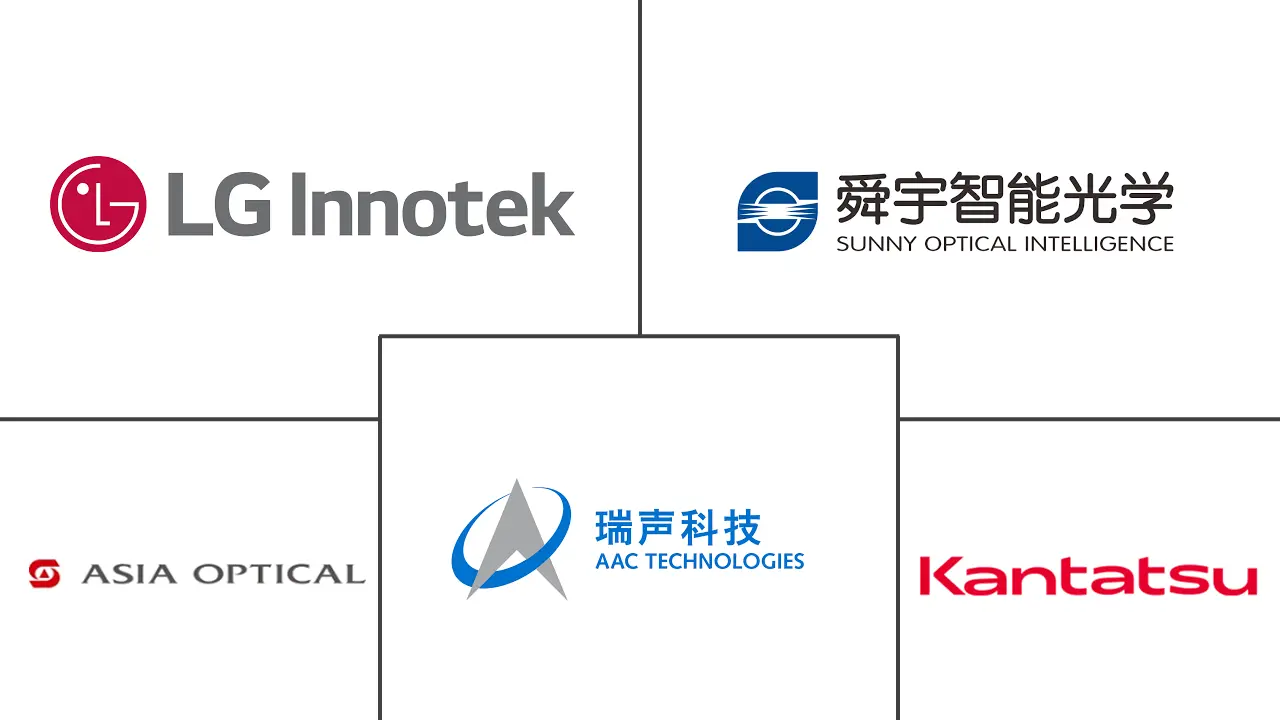Market Size of Smartphone Camera Lens Industry

| Study Period | 2019-2029 |
| Market Size (2024) | USD 5.01 Billion |
| Market Size (2029) | USD 7.43 Billion |
| CAGR (2024 - 2029) | 8.21 % |
| Fastest Growing Market | Asia Pacific |
| Largest Market | Asia Pacific |
Major Players
*Disclaimer: Major Players sorted in no particular order |
Need a report that reflects how COVID-19 has impacted this market and its growth?
Smartphone Camera Lens Market Analysis
The Smartphone Camera Lens Market size is estimated at USD 5.01 billion in 2024, and is expected to reach USD 7.43 billion by 2029, growing at a CAGR of 8.21% during the forecast period (2024-2029).
The market is witnessing various advancements related to the different types of lenses being used in smartphones. Various smartphone manufacturers are developing smartphones with multiple cameras that include other types of lenses, including telephoto lenses, macro lenses, and ultra-wide-angle lenses.
- The lenses of smartphone cameras refer to the optical components integrated into the camera modules of smartphones. These lenses combine with sensors and image-processing algorithms to capture photos and videos. A single lens typically comprises multiple glass or plastic elements arranged in a specific configuration to achieve the desired optical performance. Combining multiple lenses with different focal lengths and functionalities helps smartphone users capture a wide range of images without using external attachments.
- With rapidly increasing technological developments in smartphones, the adoption of camera lenses has been continuously rising, thereby pushing the market players to invest in this technology through product innovations, expansion activities, mergers, acquisitions, collaborations, and partnerships. For instance, in January 2023, Samsung Electronics announced the launch of its latest image sensor, the ISOCELL HP2, which entails a 200-megapixel resolution. According to Samsung, the lens will offer improved pixel technology for better image quality in its premium smartphones.
- Growing regional economies and rising disposable incomes in emerging markets have led to a surge in the global demand for smartphones. With each new generation of smartphones, there are new advancements in the capabilities of the cameras. Consumers increasingly prioritize the quality of a phone's camera while purchasing a new one. Thus, manufacturers are investing in improving the performance of camera lenses in mobile phones.
- Over the recent years, the smartphone market has witnessed a decline in sales. Several factors have contributed to this decline, including reduced demand from customers, economic uncertainties, and global inflation.
- The outbreak of the COVID-19 pandemic has left a notable dent in the market as various containment measures taken by governments across multiple countries, such as the implementation of lockdowns, significantly impacted the growth of the industry. As a result, a slowdown was witnessed in the market, especially during the initial phase of the pandemic. The COVID-19 pandemic impacted the global sales of smartphones. This situation also posed several challenges to the industry. Lockdowns and economic uncertainties led to consumers spending less on non-essential products, thereby resulting in a decrease in the demand for smartphones.
